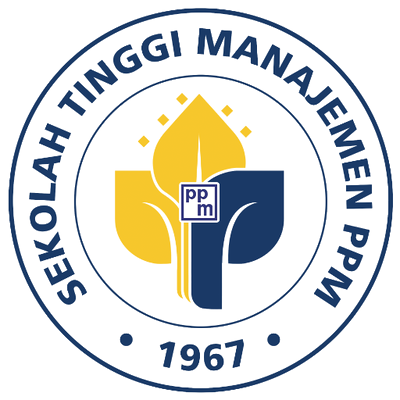PENGGUNAAN IT DALAM PROYEK NEW PRODUCT DEVELOPMENT DI INDONESIA: IDENTIFIKASI FAKTOR PENENTU DAN DAMPAK KINERJA PROYEK
Abstract
Keywords
Full Text:
PDF (Bahasa Indonesia)References
Anakwe, U., Igbaria, M., and Anandarajan, M. (2000). Management Practices across Cultures: Role of Support in Technology Usage. Journal of International Business Studies 31(4):653–66.
Aziz, Azwar. (2012). Pemanfaatan Teknologi Informasi dalam Pengembangan Bisnis Pos. Buletin Pos dan Telekomunikasi 10 (1): 35-50
Armbrecht, F.M.R., Chapas, R.B., Chapelow, C.C., Farris, G.F.,Friga, P.N., Hartz, C.A., McIlvaine, M.E., Postle, S.R., and Whitwell, G.E. (2001). Knowledge Management in Research and Development. Research-Technology Management 44(4):28–49.
Barczak, G., Sultan, F., dan E.J. Hultink. (2007). Determinants of IT usage and new product development. Journal of Product Innovation Management 24: 600-613
Barney, Jay B. and Delwyn N. Clark. (2007). Resource-based theory: creating and sustaining competitive advantage. Oxford University Press. New York
Beath, C.M. (1991). Supporting the Information Technology Champion. MIS Quarterly 15(3):355–72.
Bowden, M. (2004). Report on the Role of IT in New Product Development Today. PDMA Visions 1:1–8 (January).
Boynton, A., Zmud, R., and Jacobs, G. (1994). The Influence of IT Management Practice on IT Use in Large Organizations. MIS Quarterly 18:299–318 (September).
Cheng, C. C., & Huizingh, E. K. (2014). When is open innovation beneficial? The role of strategic orientation. Journal of product innovation management, 31(6), 1235-1253.
Chesbrough, Henry. (2003). Open Innovation: The new imperative for creating and profiting from technology. Harvard Business School Press. Massachussets
Cooper, Robert G. (2003). Winning at new products: creating value through innovation. Basic Books. New York
Cooper, R., Edgett, S., and Kleinschmidt, E. (2004). Benchmarking Best NPD Practice—I. Research Technology Management 47(1):31–41 (January–February).
Cooper, R. G. 2011. Winning at New Products: Creating Value Through Innovation, 4th ed. New York Basic Books-Perseus .
Devaraj, S. and Kohli, R. (2003). Performance Impacts of Information Technology: Is Actual Usage the Missing Link? Management Science 49(3):273–89.
Durmusoglu, S.S., Calantone, R.J., and V. Sambamurthy. (2006). Is more information technology better for new product development?. Journal of Product & Brand Management 15 (7) 435-441
Farrell, D. (2003). The Real New Economy. Harvard Business Review 81(10):104–12.
Grover, V. (1993). An Empirically Derived Model for the Adoption of Customer-Based Interorganizational Systems. Decision Sciences 24(3):603–49.
Hair Jr, Joseph F., William C. Black., Barry J. Babin., Roldp E. Anderson. (2010). Multivariate Data Analysis (Seventh Edition). Pearson Eduction Limited. Essex
Johnson, G. and Scholes, K. (2008). Exploring corporate strategy (Eighth Edition). Pearson Eduction Limited. Essex
Maidique, M. and Zirger, B.J. (1984). A Study of Success and Failure in Product Innovation: The Case of the U.S. Electronics Industry. IEEE Transactions on Engineering Management 31(4):192–203.
Marion, T. J., Barczak, G., and E.J. Hultink. (2014). Do social media tools impact the development phase? An exploratory study. Journal of Product Innovation Management 31 (S1): 18-29
Moch, M.K. and Morse, E.V. (1977). Size, Centralization, and Organizational Adoption of Innovations. American Sociological Review 42(5):716–25.
Osei-Bryson, K.M. and Ko, M. (2004). Exploring the Relationship between Information Technology Investments and Firm Performance Using Regression Splines Analysis. Information and Management 42:1–13.
Ozer, M. (2002). Process implications of the use of the internet in new product development: A conceptual Analysis. Industrial Marketing Management 32: 517-530
Prihartina, Yun, dan kawan-kawan. (2011). Sistem Teknologi (Information Technology) Informasi di Indonesia. Program Studi Pascasarjana Teknik Industri. Universitas Gadjah Mada. Yogyakarta.
Ross, J. W., C. M. Beath, and D. L. Goodhue. 1996. Develop long-term competitiveness through IT assets. Sloan Management Review 38 (1): 31–42.
Sambamurthy, V. and Zmud (2000). Research Commentary: The Organizing Logic for an Enterprises IT Activities in a Digital Era—A Prognosis of Practice and a Call for Research. Information Systems Research 11(2):105–14.
Sethi, R., Pant, S., and Sethi, A. (2003). Web-Based Product Development Systems Integration and New Product Outcomes: A Conceptual Framework. Journal of Product Innovation Management 20:37–56.
Song, M. X., H. Berends, H. Van der Bij, and M. Weggemen. 2007. The effect of IT and co-location on knowledge dissemination. Journal of Product Innovation Management 24 (1): 52–68.
Sunarto, Hari., et al. (2014). Virtual Office Service Management: Proposed Development Model in Indonesia Universities. Indian Journal of Management Science IV (1): 69-77
Teo, T. and Choo, W. (2001). Assessing the Impact of Using the Internet for Competitive Intelligence. Information and Management 39(1):67–83.
Thomke, S. (2006). Capturing the Real Value of Innovation Tools. Sloan Management Review 47(2):24–32.
Wade, M., and J. Hulland. 2004. The resource-based view and information systems research: Review, extension and suggestions for future research. MIS Quarterly 28 (1): 107–42.
Wernerfelt, B. (1984). A resource-based view of the firm. Strategic Management Journal 5 (2)
DOI: https://doi.org/10.34149/jmbr.v15i2.144
Indexing
JMBR Editorial Office: PPM School of Management, Jl. Menteng Raya 9-19 Jakarta 10340 Phone: 021-2300313 ext 2354

License
JMBR is using CC BY License
This work is licensed under a Creative Commons Attribution 4.0 International License.


















